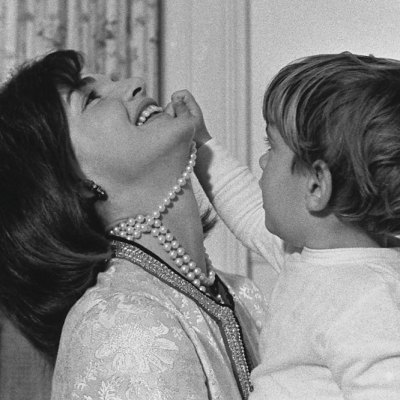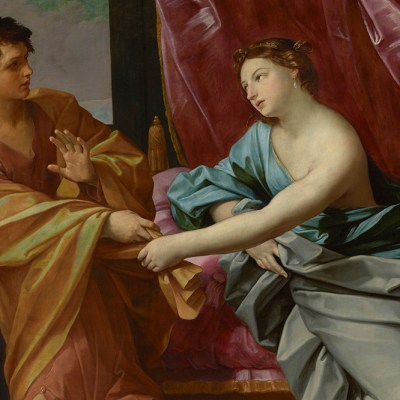After a couple of years of steady decline, last week’s auctions in New York, which swept in more than $2.2bn (all results include fees) across Christie’s, Sotheby’s and Phillips, have been heralded as proof that there is life in the old dog yet.
Last week’s success was in large part due to some voracious Boomer and Silent Generation collectors shuffling off this mortal coil, leaving a wealth of Impressionist, modern and post-war works. Kicking off the week on Monday night at Christie’s were 18 works from the collection of Patricia G. Ross Weis and Robert F. Weis totalling $218m, led by Mark Rothko’s No. 31 (Yellow Stripe), which sold for $62m. Then there were the Chicago collectors Jay and Cindy Pritzker, 13 of whose works sold in an evening sale at Sotheby’s on 20 November for $109.5m. A large chunk of this came from Van Gogh’s Parisian Novels (1887), sold for $62.7m to the art advisor Patti Wong – a record for a work by the artist produced in Paris. Other collections sold last week at Christie’s include 19 lots from the Chicago collectors Gale Neeson and the late Stefan Edlis, totalling $49.2m and topped by Warhol’s The Last Supper (1986) at $8.1m, and more than 70 modern works from the Arnold and Joan Saltzman collection, sold for $110m, with Fernand Léger’s Composition (Nature morte) (1914) the top lot at $19.6m.

But chief among these hoardings was that of the cosmetics billionaire Leonard Lauder, who died in June (not to be confused with his brother, Ronald, who is also an art collector). Leonard’s estate sold off more than 50 works at Sotheby’s last week, all guaranteed to sell, with 24 of them in a dedicated sale on 18 November. The sale was the first to take place at Sotheby’s new headquarters, the brutalist Breuer Building, which the auction house paid $100m for last year.
In terms of turnover and publicity, it earned its keep, though now that Sotheby’s is a private company, profit is a mystery. The Lauder collection evening sale alone brought in $527.4m, and the entire evening’s auctions totalled $706m – the most Sotheby’s has ever made in one night.
That total was in large part due to Gustav Klimt’s Portrait of Elisabeth Lederer (1914–16), appearing at auction for the first time with an estimate of $150m, and selling for $236.3m. Depicting the daughter of one of Klimt’s greatest patrons and seized by the Nazis during the Second World War, the painting was restituted to the sitter’s brother in 1948 and bought by Lauder in 1985. It is undisputedly a trophy painting. The Klimt took a solid 20 minutes to sell, with auctioneer Oliver Barker eking out every last cent from bidders in the room and on the phone (if you need a cure for insomnia, the video is on YouTube). Eventually, it sold to a phone bidder with Julian Dawes, Sotheby’s vice chairman and head of Impressionist and modern art. The price makes it the most expensive modern painting and second most expensive painting ever sold at auction, beaten only by the Salvator Mundi, attributed to Leonardo da Vinci, which sold at Christie’s in 2017 for $450.3m.

Of course, Sotheby’s will not comment on the identity of Klimt buyer, but word is that it has gone to the Middle East, with the industry newsletter the Baer Faxt speculating that it was bought by ADQ, the Abu Dhabi sovereign wealth fund that is a minority owner of Sotheby’s, underbid by the American collector Ken Griffin.
Another underbidder, the art advisor and former Sotheby’s chairman Patti Wong, told me after the sale: ‘To have six bidders above the starting bid of $130m on the portrait was truly phenomenal and goes to show how deep the market is for the exceptional and rare.’ Wong pointed out that the final price doubled the artist’s auction record, set only two years ago by Lady with a Fan (1917–18), which was bought for £85.3m at Sotheby’s London by none other than Wong, on behalf of a client.
Wong, according to the Baer Faxt, was also the buyer of a Klimt landscape in the Lauder sale last week, Forest Slope in Unterach on the Attersee (1916), which sold for a within-estimate $68.3m. Another Klimt landscape, Blooming Meadow (c. 1908), sold for $86m, also within estimate. These ‘exquisite landscapes may have been overshadowed by the overwhelming focus on the portrait,’ says Wong, ‘so arguably they could have achieved significantly more if brought to market at different times.’

What was not overshadowed were the two drawings by Klimt in the sale, both studies for Portrait of Adele Bloch-Bauer I (1903-04), which surprised onlookers by selling for three to four times their estimates, no doubt aided by their provenance, at $520,700 and $482,600 respectively.
Wong, who looks after numerous ultra-wealthy Asian collectors, observes overall that ‘Asian demand for art is deeper at the top end than has sometimes been reported’, with her clients active on many of the top lots. After the trio of back-to-back white glove sales (the term given to an auction where every lot sells) at Sotheby’s on Thursday night, Wong added that the ‘auction houses are getting very efficient in managing these sales’. This management extended to the enthusiastic use of guarantees (around 70 per cent of last week’s lots were subject to one) and lowering of estimates, so not much was left to chance.
The New York-based advisor Megan Fox Kelly said before the sales that there was relatively little discretionary selling, ‘given the market’s cooler tone and the inflammatory press suggesting an even broader retreat. Collectors who don’t need to sell are likely waiting for a more buoyant environment.’ The result, Fox Kelly said, is ‘fewer speculative consignments and a concentration of material that has been off the market for decades’, such as the Klimt. The market has retracted, she concedes, but most noticeable is a shift in behaviour: ‘We’re moving from a momentum-driven market to a merit-driven one.’
Another headline sale of the week was that of Frida Kahlo’s self-portrait El sueño (La cama) (1940), showing the artist in her bed next to a skeleton, part of ‘Exquisite Corpus’, a group of 24 Surrealist works from an anonymous collection sold at Sotheby’s on Thursday night for $98m. The Kahlo set a new record for her work, at $54.6m, more than 1,000 times its 1980 price, which is also – debatably – the record for any work by a woman at auction, beating the $44.4m paid for Georgia O’Keeffe’s Jimson Weed/White Flower No.1 (1932) at Sotheby’s in 2014. The New York Times, however, posited that the O’Keeffe price is the equivalent of around $60.5m today, so still beats Kahlo by that measure.

‘Exquisite Corpus’, which, according to the Art Newspaper, came from the collection of the record producer Nesuhi Ertegun and his wife Selma, set another record for a female Surrealist, Dorothea Tanning, whose Interior with Sudden Joy (1951) sold for $3.2m, beating the Tanning record set in May at Christie’s. Women Surrealists are in demand, particularly with Latin American buyers, and, on Monday night at Christie’s, a record was also set for a work by Leonor Fini, whose Dans la Tour (Autoportrait avec Constantin Jeleński) made $2.5m, bettering the previous high of $2.1m in 2021.
Echoing the point made by Wong, Imogen Kerr, Co-Head of Christie’s 20th Century Evening Sale, observes that ‘an increasingly thoughtful approach to pricing’ is crucial in navigating the softer market. Her colleague Kathryn Widing, Head of Christie’s 21st Century Evening Sale, says that the auction house ‘strove to keep estimates realistic and strategic’.
Widing says that the sales at Christie’s ‘tended away from emerging markets consciously’, alluding to the weaker spot of today’s market – younger, ‘wet paint’ artists who were beloved by speculators in the 2021–22 boom but were thin on the ground last week.
Across the week, Sotheby’s total sales came to more than $1.1bn (the second highest in the firm’s history), Christie’s around $964.5m and Phillips around $67.3m – all up from last year and back to a level not seen since the New York sales of May 2022. Auction houses often bemoan the lack of supply of quality works. Last week that was clearly not a problem. The question now is whether the market can absorb all of the blue-chip art that will emerge over the next decade through the Great Wealth Transfer and maintain the price levels. The answer, for now at least, is yes.
Meanwhile, in Paris this week a new record was set for the Italian baroque painter Guido Reni. One of several versions of David with the head of Goliath appeared at Artcurial on Tuesday 25 November, having been attributed to Reni by Éric Turquin, an expert well-known for his Old Master discoveries. Estimated to sell for between €2m and €4m, it sold to a European collector for €12.4m.




